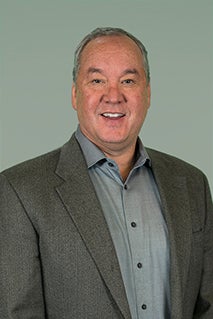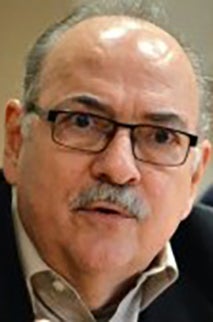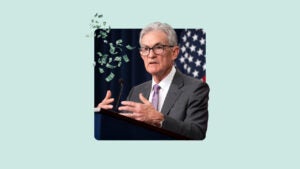Survey: Economists see unemployment sinking to near 50-year low in 2022

By the end of this year, just about all the jobs lost to the coronavirus pandemic will be recovered and joblessness will be close to a 50-year low, according to the nation’s top economists.
Experts polled for Bankrate’s Fourth-Quarter Economic Indicator survey see the unemployment rate dropping to 3.8 percent when 2022 concludes. Joblessness previously sank to a pre-pandemic low of 3.5 percent for the first time since the 1960s. Meanwhile, economists forecast that U.S. employers will add an average of 292,000 new positions each month over the course of this year.
To be sure, that projection reflects a slowdown in job creation, with firms creating about 484,000 new positions each month between December 2020 and November 2021. Yet, if that forecast plays out, the job market will have reached a significant milestone: about 98 percent of its 22.4 million pandemic-era job losses will be restored.
“If the unemployment rate does drop further as many economists expect, the job market will remain tight or tighten further,” says Mark Hamrick, Bankrate senior economic analyst and Washington bureau chief. “That will translate to solid job security and wage growth, effectively money in the bank.”
Forecasts and analysis:
This article is the first in a three-part series analyzing findings from Bankrate’s Fourth-Quarter Economic Indicator poll:
- Economists see unemployment sinking to near 50-year low in 2022
- Experts predict another year of decades-high inflation
- 93% of economists see the Fed lifting rates more than once in 2022
What’s going on with the U.S. labor market
Notably, the majority of respondents in Bankrate’s poll (or 81 percent) see the unemployment rate falling, while every economist sees the labor market growing over the next 12 months. As of November 2021, 4.2 percent of the labor force is jobless.
Economists’ forecasts in Bankrate’s poll were less optimistic than officials on the Federal Reserve, whose December 2021 projections see unemployment falling back to the near half-century low of 3.5 percent by the end of this year.
Some respondents, however, did expect the job market to be that strong in 2022, with five penciling in a 3.5 percent unemployment rate by the end of the year. One economist expected the labor market to eclipse a new record-low unemployment rate of 3.2 percent this year.
Still, economists’ job creation forecasts are slowing, with the 292,000 payrolls forecast down from the third-quarter outlook of 340,000 and second-quarter outlook of 412,000.
That’s partly because COVID continues to be the biggest question mark. About 2.4 million people are still missing from the labor force, according to Labor Department data. That weighs on job creation, as experts say those workers are staying on the sidelines out of fear of catching the virus. The new Omicron coronavirus variant poses even more wrinkles, likely weighing on job growth in the first three months of 2022 especially, economists said.
Those virus-related uncertainties don’t appear to be holding back firms from wanting to hire. About 10.6 million jobs in November were open in the U.S. economy, near an all-time high, suggesting that demand for workers is still strong. At the same time, 6.9 million in the month were classified as unemployed, reflecting supply-side challenges in hiring that likely can’t be solved without containing the virus.
“U.S. businesses have a boatload of open job positions to fill, but risks are that the Omicron variant of COVID-19 delays any improvement on the labor-supply front,” says Ryan Sweet, senior director of economic research at Moody’s Analytics. “More than 2 million workers say concerns about getting or spreading COVID-19 are their main reason for not working. Therefore, if the Omicron wave intensifies, it could keep many of these people out of the labor force. Remember, monthly job growth cooled noticeably during the Delta wave — but that was more of a supply issue rather than demand.”
Other workers might’ve been swayed to retire early during the pandemic, with research from the Federal Reserve Bank of St. Louis pointing to 3 million extra retirements in 2020.
Yet, as firms clamor for more workers, they could start to raise wages, enticing some of those missing workers to jump back in the labor market.
“Labor force participation is a key uncertainty in the outlook,” says Scott Brown, chief economist at Raymond James Financial. “Early retirements and dependent care issues will prevent a full return to the pre-pandemic level, but better wages could help.”
Not helping the problem is waning fiscal stimulus. The Fed and Congress rushed to save the U.S. economy when the virus crushed the job market, slashing interest rates to zero, sending direct stimulus checks and ramping up weekly unemployment benefits. However, Americans’ personal savings are now even lower than they were before the pandemic, and most of those emergency relief provisions have expired (though the Biden administration extended the federal student loan forbearance program through May 1). Even Fed officials plan to raise interest rates at least three times this year.
“The labor market is strong due to strong fiscal and monetary [stimulus] plumping up demand,” says Bill Dunkelberg, chief economist at the National Federation of Independent Business. “This will end. In the meantime, the population is not growing, participation is slowing, and the workforce is getting older. As these events collide, we get a tight labor market.”
What the experts think

Despite risks from inflation, the pandemic and rising interest rates, the economy will continue to add jobs, powered mainly by household wealth and consumer spending. The pandemic will continue to be the major limiting factor in job growth, and will continue to depress job formation in the services industry especially.— Robert Frick, corporate economist, Navy Federal Credit Union

Workers, especially those who cannot work from home, still face the fear of getting sick of having to stay home to take care of someone who is sick. The risk of school closures will also constrain the recovery in the new year. Loss of life and workers battling long-haul COVID are longer-term labor market concerns.— Yelena Maleyev, economist, Grant Thornton

The job market is tight. It is experiencing over-full employment, even though the Fed is in denial about that. Full employment is not simply the number of people working or how low the unemployment rate is. It is about having jobs for those who are willing to work. Those not willing to work — however large the number — are not unemployed. Clearly jobs are plentiful and willing workers are in short supply.— Robert A. Brusca, chief economist, Fact and Opinion Economics
Methodology
The Fourth-Quarter 2021 Bankrate Economic Indicator Survey of economists was conducted Dec. 13-20. Survey requests were emailed to economists nationwide, and responses were submitted voluntarily online. Responding were: Scott Anderson, executive vice president and chief economist, Bank of the West; Scott J. Brown, chief economist, Raymond James Financial; Ryan Sweet, senior director of economic research, Moody’s Analytics; Gregory Daco, chief U.S. economist, Oxford Economics; Yelena Maleyev, associate economist, Grant Thornton LLP; Odeta Kushi, deputy chief economist, First American Financial Corporation; Robert Frick, corporate economist, Navy Federal Credit Union; Tenpao Lee, professor emeritus, Niagara University; Robert Hughes, senior research fellow, American Institute for Economic Research; Kathryn Anne Edwards, economist, RAND Corporation; Robert A. Brusca, chief economist, Fact and Opinion Economics; Joel L. Naroff, president, Naroff Economics; John E. Silvia, founder and president, Dynamic Economic Strategies; Bill Dunkelberg, chief economist, National Federation of Independent Business; Mike Englund, chief economist, Action Economics; and Bernard Markstein, president and chief economist, Markstein Advisors.






